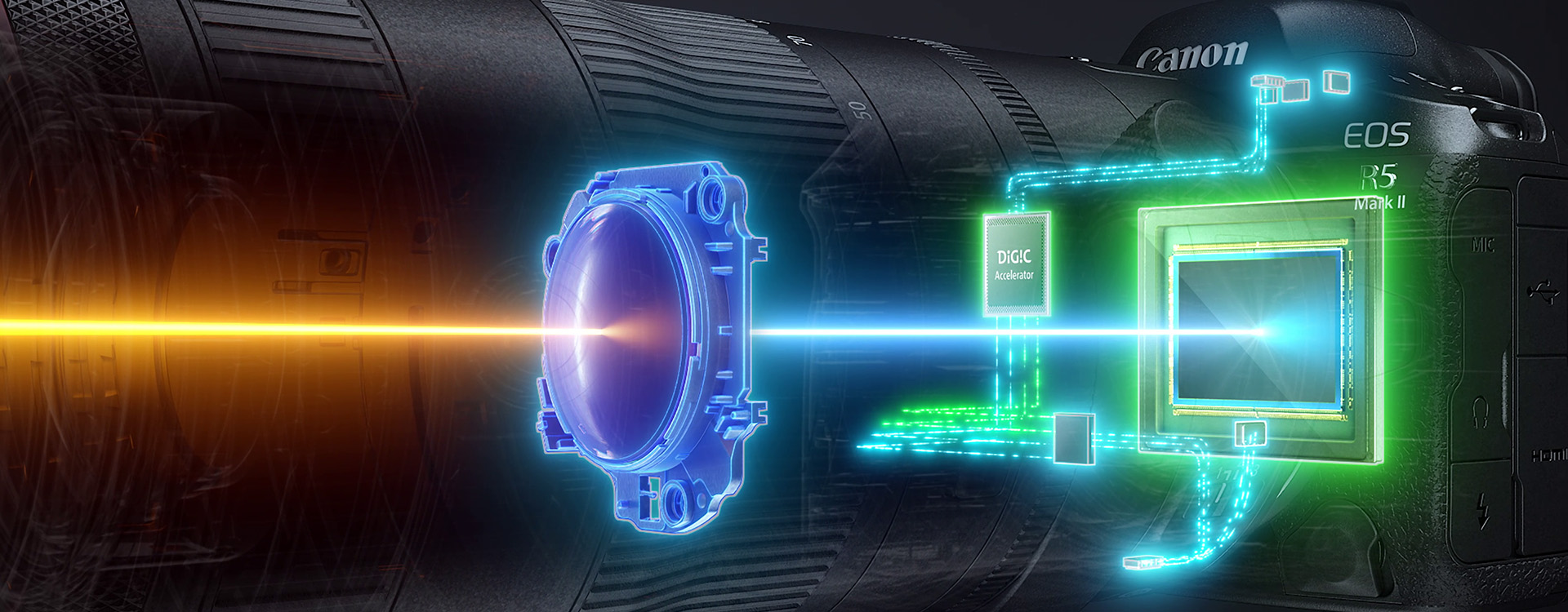The Canon EOS R5 Mark II has arrived, bringing both excitement and controversy to the photography world. After extensive testing across multiple environments - from controlled studio settings to high-paced sports events - let's dive deep into what makes this camera tick and whether it deserves a place in your gear bag.
First Impressions and Design
The R5 Mark II maintains Canon's renowned ergonomic design while packing new technology under the hood. But as we'll discover, this isn't just a simple iteration - it's a camera that challenges our expectations in unexpected ways.
The Dynamic Range Debate
Perhaps the most controversial aspect of the R5 Mark II is its dynamic range performance. At ISO 100, tests show a surprising 4 EV reduction compared to its predecessor, while ISO 400 shows a 1.3-stop difference. But before you reach for your pitchforks, let's put this into perspective.
In real-world shooting, these numbers tell only part of the story. During extensive testing, we found that:
- Shadow recovery remains robust and practical
- The difference becomes negligible at higher ISOs
- A slight overexposure at ISO 500 versus 400 showed virtually no quality loss
This suggests that while technically measurable, the impact on actual photography might be less significant than the numbers imply.
Eye-Control Focus: The Future is Here (Almost)

One of the most exciting innovations in the R5 Mark II is its Eye-Control Focus system. Tested during a triathlon, this feature promises to revolutionize how we track subjects. Imagine looking at a subject and having the camera instantly focus there - it's like something out of science fiction.
However, like any groundbreaking technology, it comes with a learning curve:
- Requires practice for consistent accuracy
- Can be temperamental in crowded scenes
- Excels in controlled environments like portraits
- May need refinement for high-pressure situations
Rolling Shutter Revolution

The improved electronic shutter performance is where the R5 Mark II truly shines. The faster read speeds make sports photography with electronic shutter not just possible, but preferable in many situations. This is a significant leap forward for mirrorless technology, addressing one of the persistent criticisms of electronic shutters.
Color Science Evolution
Canon has made subtle but meaningful adjustments to their color science. The R5 Mark II produces slightly warmer images with better green correction, effectively addressing the magenta bias some users noticed in the original R5. This refinement shows Canon's attention to user feedback and commitment to image quality.
Video Capabilities: The Cinema Question
The implementation of C-Log 2 and improved video features raises an interesting question: Can the R5 Mark II replace dedicated cinema cameras? The answer is nuanced:
Strengths:
- Excellent C-Log 2 performance
- Comparable image quality to dedicated cinema cameras
- Superior mobility and flexibility
Limitations:
- Lacks built-in ND filters
- Less accessible monitoring tools
- Missing some professional video-centric features
Professional Workflow Integration
Perfect For:
- Hybrid shooters needing both photo and video
- Sports photographers requiring reliable electronic shutter
- Portrait photographers who can leverage Eye-Control Focus
- Event photographers needing versatility
Consider Alternatives For:
- Dedicated cinema work requiring specific tools
- Situations demanding maximum dynamic range at base ISO
- High-volume studio work where established workflows are crucial
Conclusion

The Canon EOS R5 Mark II is a fascinating mix of innovation and refinement. While some specifications might seem like steps backward, the real-world performance tells a different story. It's a camera that pushes boundaries in areas like Eye-Control Focus and electronic shutter performance while making thoughtful improvements to color science and usability.
Is it perfect? No. Is it revolutionary? In some ways, yes. But most importantly, it's a camera that shows Canon's willingness to innovate while maintaining the reliability professionals demand. The dynamic range discussion will likely continue, but in practical use, the R5 Mark II proves itself a worthy successor to one of Canon's most popular cameras.





